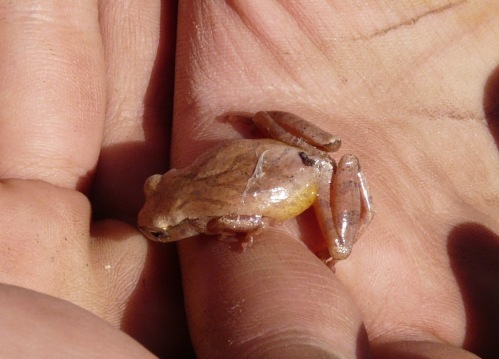The majority of fossils from the Diamond Valley Lake deposits are from small animals. While small mammals are most common, there are substantial numbers of birds, reptiles, and amphibians.
The bone shown above is a portion of a frog’s left humerus, seen in ventral view; the bars behind it are 1 mm wide. Approximately the distal third of the bone is preserved, with the distal end (the elbow joint) on the right. The expanded distal end is divided into two parts; the larger, more spherical portion is the articular condyle, while the smaller medial portion (on the lower right) is the medial epicondyle.
This humerus has been identified as Pseudacris sp.. Pseudacris is a widespread North American frog genus that includes various tree frogs, chorus frogs, and peepers, with several species still living in the southwestern US and Mexico. Below is an eastern example, a spring peeper (Pseudacris crucifer):

An interesting feature of many frog species is that the humeri are sexually dimorphic. Males have a large flange, the crista medialis, that extends proximally from the medial epicondyle and make the humerus look much wider in ventral view. This specimen lacks a large crista medialis, so if that is a characteristic on Pseudacris it suggests this specimen is a female.



